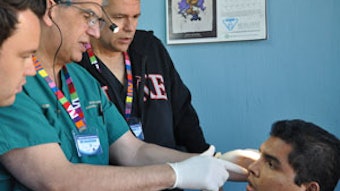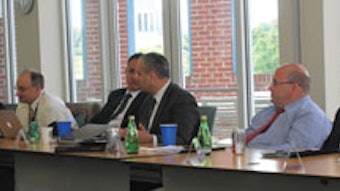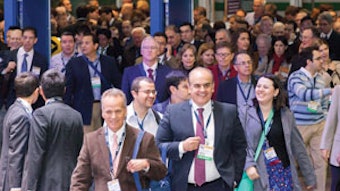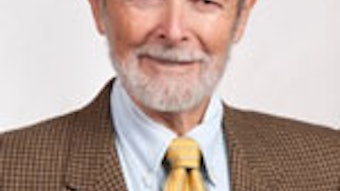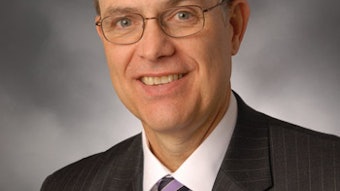Armenia’s First Bone-anchored Hearing Device – EXTENDED ONLINE VERSION
Kevin A. Peng, MD Resident Physician, department of head and neck surgery, University of California, Los Angeles (UCLA) The Yerevan airport felt much like any other, except that the line to clear immigrations and customs was blissfully short. I was greeted by Salpy Akaragian, RN, MN, FIAN, a UCLA nursing administrator who, along with Akira Ishiyama, MD, the senior neurotologist at UCLA, spearheaded the first efforts to bring cochlear implantation and advanced otologic care to Armenia in late August and early September of last year. In its current incarnation, the Republic Armenia is young—22 years old. Its capital, Yerevan, is a refreshing mix of new and old. We woke at 5:30 am and after breakfast, were whisked to Erebuni Medical Center, where our patients were waiting. As they were taken to the operating room, we consulted on a string of otologic patients: otosclerosis, deafness, after neonatal meningitis, and EVA syndrome. Dr. Ishiyama scrubbed to supervise and assist Artur Shukuryan, MD, chair of the department of otorhinolaryngology at the Yerevan State Medical University (YSMU), as well as Vigen Bakhshinyan, MD, a former YSMU resident. Some things were familiar: the scrubbing, the draping, and the hair clipping. Others were not: the plastic microscope drape was washed between cases and reused. Instrument sterilization occurred on a small back burner in the kitchen area of the operating suite, right next to the electric coffeepot. We initially performed two cochlear implants. The following day, three cochlear implant devices and two bone-anchored hearing (BAHA) devices finally cleared customs, and we rushed to the hospital. The patients, who had been on-call for surgery pending delivery of the devices, arrived before us. Drs. Ishiyama and Bakhshinyan performed cochlear implants, while I performed BAHA implants with the assistance of Dr. Shukuryan. These were the first two BAHA devices ever implanted in Armenia. I left postoperative care instructions for the three audiologists, who had been trained in Moscow and had previous experience with the BAHA system. The trip made several lasting impressions. Although the facilities were relatively antiquated and the resources generally limited, they were sufficient to provide state-of-the-art otologic care. The camaraderie between patients’families and the physicians was impressive—all were on a first-name basis, even with the chair of the department! Finally, the devotion the patients’families displayed was truly remarkable.
Kevin A. Peng, MD
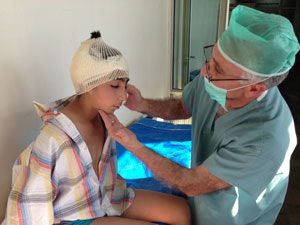 The first patient to undergo BAHA implantation in Armenia.
The first patient to undergo BAHA implantation in Armenia.Resident Physician, department of head and neck surgery, University of California, Los Angeles (UCLA)
The Yerevan airport felt much like any other, except that the line to clear immigrations and customs was blissfully short. I was greeted by Salpy Akaragian, RN, MN, FIAN, a UCLA nursing administrator who, along with Akira Ishiyama, MD, the senior neurotologist at UCLA, spearheaded the first efforts to bring cochlear implantation and advanced otologic care to Armenia in late August and early September of last year.
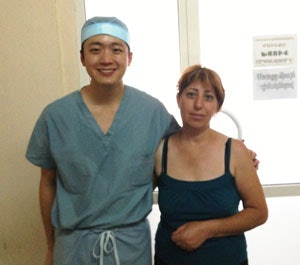 Kevin Peng, MD, with the mother of the first BAHA patient.
Kevin Peng, MD, with the mother of the first BAHA patient.In its current incarnation, the Republic Armenia is young—22 years old. Its capital, Yerevan, is a refreshing mix of new and old.
We woke at 5:30 am and after breakfast, were whisked to Erebuni Medical Center, where our patients were waiting. As they were taken to the operating room, we consulted on a string of otologic patients: otosclerosis, deafness, after neonatal meningitis, and EVA syndrome.
Dr. Ishiyama scrubbed to supervise and assist Artur Shukuryan, MD, chair of the department of otorhinolaryngology at the Yerevan State Medical University (YSMU), as well as Vigen Bakhshinyan, MD, a former YSMU resident. Some things were familiar: the scrubbing, the draping, and the hair clipping. Others were not: the plastic microscope drape was washed between cases and reused. Instrument sterilization occurred on a small back burner in the kitchen area of the operating suite, right next to the electric coffeepot.
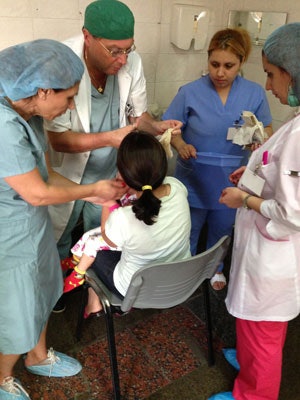 Salpy Akaragian, RN, (far left) with Artur Shukuryan, MD, (second from left) changing a mastoid dressing on a cochlear implant recipient.
Salpy Akaragian, RN, (far left) with Artur Shukuryan, MD, (second from left) changing a mastoid dressing on a cochlear implant recipient.We initially performed two cochlear implants. The following day, three cochlear implant devices and two bone-anchored hearing (BAHA) devices finally cleared customs, and we rushed to the hospital. The patients, who had been on-call for surgery pending delivery of the devices, arrived before us. Drs. Ishiyama and Bakhshinyan performed cochlear implants, while I performed BAHA implants with the assistance of Dr. Shukuryan. These were the first two BAHA devices ever implanted in Armenia. I left postoperative care instructions for the three audiologists, who had been trained in Moscow and had previous experience with the BAHA system.
The trip made several lasting impressions. Although the facilities were relatively antiquated and the resources generally limited, they were sufficient to provide state-of-the-art otologic care. The camaraderie between patients’families and the physicians was impressive—all were on a first-name basis, even with the chair of the department! Finally, the devotion the patients’families displayed was truly remarkable.


